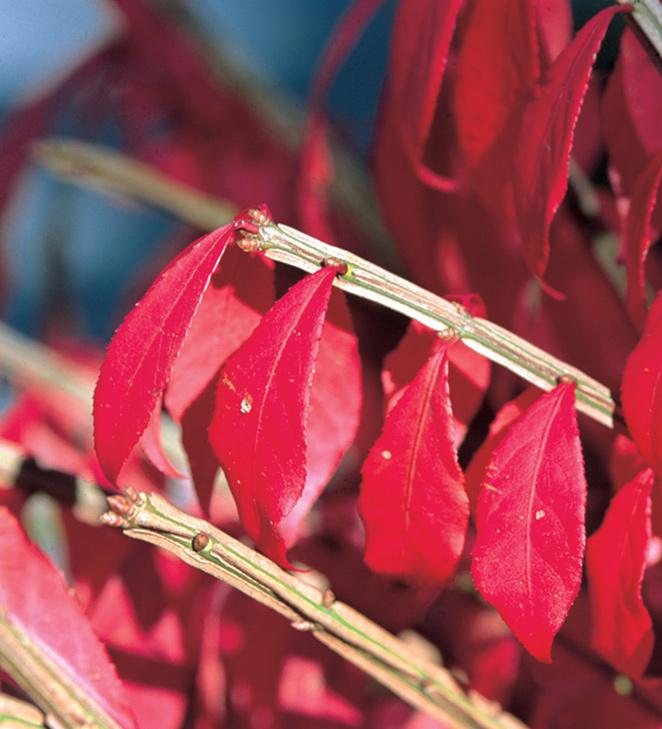About burning bush (Euonymus alatus)
Life cycle and background
Burning bush, also called winged euonymus or winged burning bush, is a deciduous, woody perennial shrub. It is native to Northeastern Asia, Japan, and Central China. It was introduced to the United States around 1860 for use in ornamental landscaping. In Maryland, it has been commonly used because of its hardiness, easy maintenance, fast-growing nature, and brilliant red fall foliage. Burning bushes have escaped cultivation and now compete with native vegetation in forests, fields, and coastal habitats where it can form dense thickets.
The Maryland Department of Agriculture (MDA) has named this a Tier 2 invasive plant. This classification means retail stores that offer this plant for sale must display a required sign indicating that it is an invasive plant. Landscapers may not supply winged burning bushes unless they provide the customer with a list of Tier 2 invasive plants.
Invasive Plants to Avoid Buying for your Yard and Garden in Maryland
Growth habit
Multi-stemmed, angular branching, deciduous invasive shrub. The stems have conspicuous corky wings. It typically grows 5 to 10 feet high and occasionally can reach 20 feet. Leaves are simple, elliptical, finely serrated, and arranged oppositely along the stems. Leaves are dark green turning to bright red in autumn. Produces inconspicuous greenish flowers in pairs in late spring and bright red-purple berries in late summer.

Reproduction
Produces a prolific amount of berries and the seeds can germinate both in sunny and shady conditions. In some situations, hundreds of seedlings can be found growing underneath the parent plant. Birds aid in seed dispersal. It also reproduces vegetatively by root suckering.

Conditions that favor growth
Tolerates full sun and full shade. Highly adaptable to many habitats.
What to plant instead
Virginia sweetspire (Itea virginica), dwarf fothergilla (Fothergilla gardenii), highbush blueberry (Vaccinium corymbosum), fragrant sumac (Rhus aromatica).
Controlling burning bush
- Not So Anonymous Euonymus | Maryland Invasive Species Council
- (PDF) Plant Invaders of Mid-Atlantic Natural Areas
- Invasive Shrub Control
- (PDF) Control of Invasive Non-Native Plants
- Burning Bush | Penn State Extension
Additional resources
Burrell, C. Colston. 2007. Native Alternatives to Invasive Plants. Brooklyn Botanic Garden.
Kaufman, Sylvan Ramsey & Wallace Kaufman. 2007. Invasive Plants: Guide to Identification and the Impacts and Control of Common North American Species
Swearingen J., K. Reshetiloff, B. Slattery, and S. Zwicker. 2002. Plant Invaders of Mid-Atlantic Natural Areas. National Park Service and U.S. Fish & Wildlife Service, Washington, DC.
Compiled by Christa Carignan, reviewed by Debra Ricigliano, University of Maryland Extension, 8/2018.
Still have a question? Contact us at Ask Extension.
